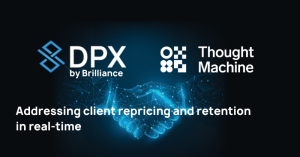Central banks in Europe and Asia have been offering negative interest rates for the last 5 to 10 years. The US and Canada haven’t yet followed suit, but banks should be ready for the possibility.
Is this strategy one that commercial banks may have to adopt for the long term? McKinsey advises “the current squeeze on margins could last another 5 years. Banks of all sizes should prepare for the long-term effects of negative interest rates.”
In the current climate, European corporate banking clients have begun to accept negative rates on deposits. Some banks are even charging negative interest rates on private banking deposit accounts, to try to move those clients to more fee-based asset management products.
In 2019, Jyske Bank in Denmark created a 10-year negative interest mortgage loan (the world’s first) at -0.5%. How do they remain profitable? The bank generates revenue originating and administering the mortgage loans and also charges depositors to keep cash in the bank.
Jyske Bank is a long-time client of Brilliance Financial Technology and was an early adopter of our digital pricing solution. In 2018, they were the first to deploy a negative interest rate pricing strategy on DealPoint, which gave the bank the flexibility to make key changes in their pricing model with speed and precision. Jyske updates their customer and portfolio profitability daily, enabling the bank to actively manage the overall portfolio.
As the interest rate environment reaches new lows, the focus on profitability – at both the customer relationship and portfolio level – will be more important than ever. Banks need to rethink how they manage profitability in today’s digital age.
Strategically, what is the modern solution towards profitability? What does it look like?
Holistic View of Customer Relationship Profitability in Real Time
First, your Relationship Managers (RMs) need a holistic view of each customer relationship to effectively manage profitability. RMs need to see the effect of different pricing and product scenarios, and factor cross-sell promises into relationship profitability. For example, when considering extending credit with a negative interest rate, RMs need to know what level of profitability they need, so the overall proposed deal improves profitability for the customer. RMs can add fees or other products/services that generate positive fees to counteract the negative interest rate on a loan.
A digital pricing solution can integrate with the bank’s systems to give RMs a complete view of each customer relationship in one place — and help them structure profitable deals every time.
Governance and Transparency for Portfolio Profitability
Second, your business executives and portfolio managers need real-time portfolio profitability management. McKinsey believes banks can mitigate basis point problems with negative interest rates “through a combination of effective governance . . . and IT and data reporting that achieves transaction-level transparency.”
To actively manage profitability in real time, you need the ability to see how each deal impacts the relationship and portfolio profitability, so you can modify the pricing before the deal is done. Key business stakeholders need the ability to review and approve deals in real time, with full audit capability. Finally, you should be able to see a multi-year forecast of the relationship and portfolio profitability as new deals are priced and added to the portfolio.
The ability to see and approve transaction-level detail in real time, with a full audit record of decision making, will give banks strong corporate governance in a negative interest rate environment.
Automation to Compete
Third, as bank profits continue to be squeezed, streamlining processes can help a bank improve efficiency and profitability. PWC UK advises banks to “reinvest in digitizing and automating functions.” They suggest that even when rates do rise, the margins banks used to expect may not return.
Banks should invest in digitization and automation in key areas impacting profitability. Banks can digitize their end-to-end pricing process and automate their pricing approval workflow to improve efficiency. Going digital with rates management gives your bank much more flexibility to implement and deploy new rates and products rapidly.
By digitizing your pricing management, you can give RMs a comprehensive set of tools to identify the best deal scenarios for approvals. “Banks could improve how they use data to recommend products to existing customers,” according to PWC UK. The Brilliance solution uses Artificial Intelligence and Machine Learning to automate those recommendations. As a result, smarter deals are proposed with a focus on relationship profitability.
Making profitability measurement and management integral in these two areas will not only improve operational efficiency, it will greatly increase overall profitability.
The Keys to Success in a Negative Interest Rate Environment
Banks need to revamp their approach to profitability management. Many banks tend to work the three pillars of bank profitability – rates management, pricing management, and profitability management – in silos. Typically, there may be 3 individual systems that aren’t fully integrated. With the latest generation of proven digital solutions, banks can strategically align and integrate these 3 areas to optimize profitability.
Negative interest rate scenarios will drive valuation of banks over the next few years. Senior management needs a modern and proven solution like DealPoint to respond rapidly to market changes and more effectively manage profitability in today’s increasingly dynamic environment.
References
https://pwc.blogs.com/business_transformation/2020/03/going-negative-.html https://www.bankrate.com/banking/federal-reserve/how-negative-interest-rates-work/ https://www.forbes.com/sites/amiyatoshpurnanandam/2020/04/01/getting-ready-for-negative-interest-rates/ https://www.mckinsey.com/business-functions/risk/our-insights/how-banks-can-ease-the-pain-of-negative-interest-rates https://www.cnbc.com/2020/06/12/do-negative-interest-rates-work-economists-cant-agree-on-how-effective-the-policy-is.html https://www.americanexpress.com/us/foreign-exchange/articles/influence-of-negative-interest-rates-on-trade-finance-from-banks/





